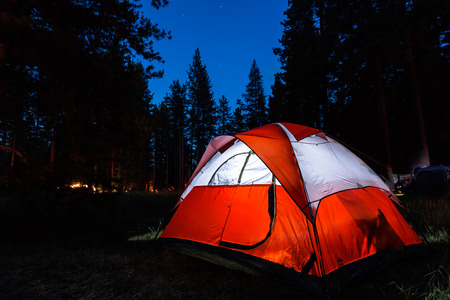Introduction to Space Challenges in UK Campervans
For campervan enthusiasts across the UK, making the most of limited space is a daily battle. Unlike their continental counterparts, British campervans are often based on compact vehicles, necessitated by narrow roads, tight parking spots, and the ever-present challenge of winding through ancient towns with infrastructure dating back centuries. The average UK campervan simply doesn’t offer the vast interiors that larger motorhomes boast—every square inch must be accounted for. Add to this the unpredictable British weather and the need for all-season gear, and you’re quickly faced with a storage conundrum. Efficient organisation isn’t just a nice-to-have; it’s an absolute necessity if you want your adventures to remain enjoyable rather than chaotic. Custom cabinets and bespoke storage solutions aren’t merely about aesthetics—they’re about survival in the wilds of Britain’s unique driving landscape. Whether you’re tackling rural B-roads in Cornwall or stealth camping near Scotland’s lochs, a well-thought-out interior can make all the difference between cramped frustration and seamless living on the road.
Assessing Your Storage Needs
Before diving into custom cabinetry for your UK campervan, its vital to assess what exactly youll be storing. British adventures often call for a blend of practical gear—think wellies, waterproofs, and compact cooking kits—alongside leisure items such as fishing rods or hiking boots. To determine the right bespoke storage solutions, begin by making an inventory of everything you typically bring on your trips.
Essential Gear vs. Leisure Items
Start by categorising your belongings. Essentials like first aid kits, torches (flashlights), and tea-making equipment need quick access and secure stowing. Leisure items might vary depending on whether you’re heading for the Lake District’s fells or the Cornish coast’s surf spots. Remember, many UK travellers make space for folding chairs, board games, or even a portable BBQ for those classic rainy-day stopovers.
Typical Campervan Storage Inventory
| Category | Common UK Items | Storage Priority |
|---|---|---|
| Essentials | First aid kit, torch, kettle, maps | High – Quick access needed |
| Clothing & Footwear | Waterproofs, wellies, jumpers | Medium – Weather dependent |
| Leisure Gear | Fishing rods, walking sticks, books | Low/Variable – Trip specific |
| Food & Cooking Supplies | Tins, tea bags, camping stove | High – Secure from movement |
| Outdoor Equipment | Chairs, awning, picnic blanket | Medium – Usually stored externally if possible |
Factoring in British Habits and Destinations
The typical UK campervanner might find themselves wild camping in Scotland one week and pitching up at a seaside site in Devon the next. This means flexible storage that adapts to muddy boots after a Peak District ramble or wetsuits from Cornwall’s waves is crucial. Designate zones within your van for wet gear and fragile items alike—bespoke cabinetry can include ventilated shoe lockers or reinforced shelves for heavier kit.
A Practical Approach: Prioritise Access and Safety
Your custom storage plan should always prioritise ease of access for daily essentials while keeping safety in mind during transit on winding country roads. Use this assessment stage to identify which cabinets need extra security features like locks or bungee restraints—particularly important given the UKs notorious potholes and roundabouts.

3. Custom Cabinet Design: Styles and Practicality
When it comes to outfitting your UK campervan, the design of your custom cabinets is critical—not just for aesthetics, but for survival on Britain’s winding roads and in its unpredictable climate. British design preferences lean towards cabinetry that blends timeless style with sheer utility. Think Shaker-inspired doors for a classic look or minimalist lines that echo modern city flats, all while ensuring every inch serves a purpose. Multi-functional units are essential; consider pull-out larders, concealed tables, and bench seats that double as storage—all robust enough to withstand the constant vibration of country lanes or cobbled streets. Materials matter more than you might think: opt for marine-grade plywood or moisture-resistant MDF, finished with hard-wearing laminate or painted surfaces that shrug off mud, condensation, and the odd spilled cuppa. Heavy-duty hinges, soft-close runners, and corrosion-resistant hardware aren’t just luxuries—they’re necessities when you’re battling salty sea air in Cornwall one week and Highland drizzle the next. By tailoring your cabinet choices to both British tastes and practical realities, you’ll create a living space that’s not only stylish but also rugged enough for true vanlife across the UK’s diverse landscapes.
Building for the British Climate
When it comes to custom cabinets and storage in your UK campervan, the battle against the British weather is real. Rain, damp, and unpredictable temperature swings can wreak havoc on poorly chosen materials, leading to swelling, warping, or even mould. To ensure your camper’s interior stands up to this relentless assault, material selection and finishing are paramount.
Choosing Moisture-Resistant Materials
Your first line of defence is picking materials designed to withstand moisture. Avoid standard MDF or chipboard – they’ll soak up water like a sponge and quickly deteriorate. Instead, look for options specifically engineered for wet environments. Here’s a quick comparison:
| Material | Moisture Resistance | Durability | Common Use in Campervans? |
|---|---|---|---|
| Plywood (Marine Grade) | Excellent | High | Yes |
| MDF (Standard) | Poor | Low | No |
| MDF (Moisture Resistant) | Moderate | Medium | Sometimes (with proper sealing) |
| Lightweight Plastic Laminate Board | Excellent | High | Yes (for doors & panels) |
| Solid Wood (Treated/Sealed) | Good (if sealed well) | Medium-High | Occasionally (adds weight) |
Selecting the Right Finishes and Hardware
A good finish is as critical as the core material. In the UK climate, opt for high-quality paints or varnishes with waterproof properties—marine varnish or exterior-grade polyurethane are strong choices. Always seal every edge, not just visible surfaces; moisture loves sneaking in through the back door. For hardware such as hinges and handles, stainless steel or powder-coated metals will outlast cheaper alternatives prone to rust.
Ventilation: An Overlooked Essential
No matter how moisture-resistant your materials are, condensation inside a van is inevitable. Plan for passive ventilation by drilling vent holes in cupboard bases and backs, especially in areas where you store clothes or food. If you’re feeling particularly robust, install louvred vents or even small 12V extractor fans near cooking areas.
Lifespan vs Cost: A Hard-Nosed Trade-Off
The temptation to cut costs is strong, but skimping on quality now means repairs down the line—often when you’re far from help on a sodden weekend in Wales. The investment in proper materials pays for itself through reduced maintenance and greater peace of mind on every trip.
5. Hidden Storage Solutions and Security
When travelling across the UK, whether you’re tucked away in a rural layby, weaving through busy city streets, or parked up at a muddy festival field, keeping your valuables safe is as crucial as making the most of every square inch inside your campervan. British ingenuity comes into its own with custom storage designs that not only maximise space but also provide security and peace of mind.
Clever British-Style Hideaways
The art of concealment is alive and well in UK campervan culture. Consider hidden floor compartments beneath the vinyl or laminate—perfect for stashing passports, emergency cash, or important documents out of sight. Traditional overhead lockers can be fitted with false bottoms, allowing you to create slim secret pockets for electronics or jewellery. Even classic bench seats can be built with lockable drawers that blend seamlessly into the upholstery, accessible only if you know where to press or pull.
Secret Compartments That Fool Even the Savviest
Custom cabinetry can include disguised book spines on shelves that open to reveal a mini safe, or hollowed-out table legs for storing spare keys. Some fitters even install slide-out panels behind kitchen units—an ideal place for hiding laptops or camera gear. These thoughtful touches are inspired by years of British vanlife experience, where discretion is often your best defence against opportunistic theft.
Security Features for Every Parking Scenario
Whether overnighting off-grid in Snowdonia or squeezing into an urban parking bay in Bristol, prioritising security is vital. Modern British van builders integrate tamper-proof locks within cabinetry and use reinforced hinges on high-value compartments. Installing motion-sensor alarms discreetly within cupboards can alert you to unwanted attention without drawing obvious notice from outside. Window tint films and privacy curtains further obscure interior layouts, deterring prying eyes wherever you roam.
By combining clever carpentry with robust security features, your UK campervan becomes both a haven and a fortress—ready for whatever the road (or festival field) throws at you.
6. DIY vs. Professional Installation
When it comes to custom cabinets and storage solutions in your UK campervan, one of the most crucial decisions is whether to roll up your sleeves and tackle the build yourself or bring in a professional fit-out specialist. Each route has its merits and drawbacks, so let’s break down what you need to consider before making your choice.
Cost Considerations
DIY projects can appear cost-effective at first glance. Sourcing materials from local timber yards or repurposing old furniture saves pounds, but don’t underestimate hidden expenses—specialist tools, quality hardware, and inevitable mistakes can quickly add up. On the flip side, hiring a UK-based professional means paying for expertise, but you gain peace of mind knowing the job will be done right, with no unexpected outlays for correcting errors.
Skill Requirements
If you’re handy with a saw and have some joinery experience, building your own cabinetry can be hugely rewarding. There’s a steep learning curve, though—working with odd angles and tight spaces in British vans demands precision. For those less confident or lacking time to refine their skills, a seasoned fit-out specialist brings years of experience navigating the quirks of UK campervans, ensuring both form and function are top-notch.
Time Investment
DIY projects require a significant time commitment. From initial sketches to final installation, every step demands patience and perseverance. For many vanlifers keen to hit the road sooner rather than later, this can be a dealbreaker. Professional installers work efficiently; they’ve honed their craft on countless vans across Britain, so turnaround times are generally much quicker than going it alone.
The Middle Ground
Some choose a hybrid approach: handling basic builds themselves while calling in pros for more complex elements like electrics or bespoke finishes. This strategy balances savings with specialist input where it counts most.
Bottom Line
Ultimately, your decision comes down to budget, confidence in your DIY abilities, and how soon you want to enjoy your upgraded campervan. Weigh these factors carefully—whether you pick up the tools yourself or trust a local expert, maximising space with custom cabinets is an investment that pays dividends on every adventure across the UK.
7. Finishing Touches: British Style and Comfort
Once your custom cabinets and storage solutions are in place, it’s the finishing touches that truly transform your UK campervan into a home on wheels. Achieving that unmistakable British style is all about blending comfort with character, using clever details and quality materials that reflect your personal taste—whether you’re after the warm charm of a Cotswold cottage or the sleek vibe of a London flat.
Soft Furnishings: The Heart of Cosy
Start with soft furnishings to bring warmth and texture into your camper. Opt for plush cushions in classic tartans, herringbone, or subtle floral prints reminiscent of the English countryside. Don’t shy away from woollen throws, chunky knits, or velvet touches—these not only add comfort but also stand up well to the unpredictable British climate. For curtains or blinds, choose fabrics that offer privacy without blocking out too much light; neutral tones work brilliantly for a timeless look, while bolder hues can inject personality.
Hardware: Subtle Sophistication
The right cabinet handles and knobs can make all the difference. In keeping with traditional British interiors, consider brass or antique-finish hardware for a heritage feel. If your style leans modern, matte black or brushed nickel options echo the understated elegance found in contemporary city flats. Pay attention to hinges and catches—soft-close mechanisms not only feel luxurious but also prevent rattling on winding country roads.
Clever Details: Character Meets Practicality
Small touches go a long way in making your campervan distinctly British. Think enamel mugs on hooks, vintage-inspired wall lights, or even a mini bookshelf filled with classic novels. Baskets made from willow or seagrass fit neatly into storage cubbies while adding rustic appeal. A compact tea set stashed in its own cupboard is almost non-negotiable for true UK authenticity. Finally, use framed prints of local landscapes or city skylines to ground your space in its surroundings—these personal flourishes ensure your van feels like home wherever you roam.
By thoughtfully selecting soft furnishings, hardware, and those clever little extras, you can create a campervan interior that’s both practical for travel and rich in British character. Whether parked by a windswept loch or tucked behind urban terraces, these finishing touches ensure every journey is made in comfort and unmistakable UK style.


